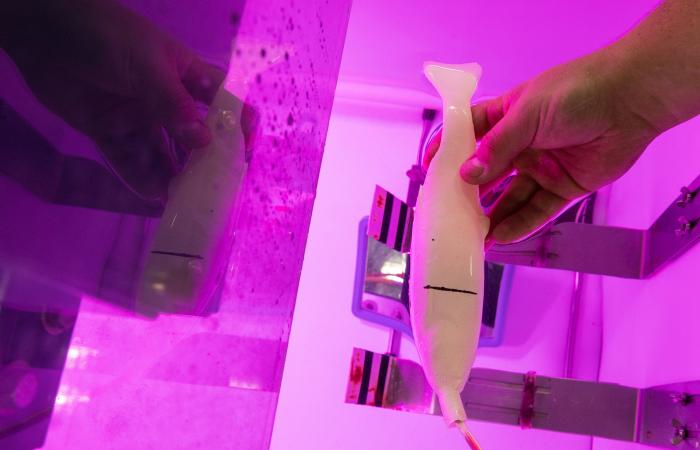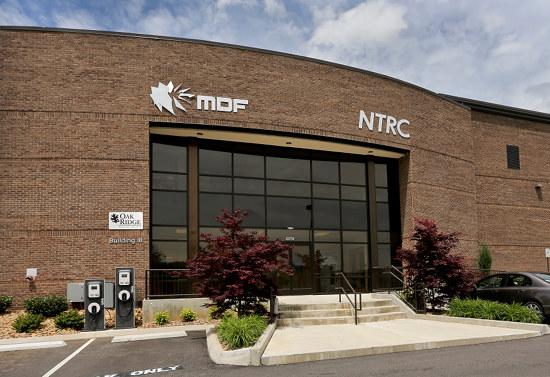ORNL Scientists Make Fake Fish with 3D Printing and Sensors to Research Environmental Impact of Hydropower Dams
Hydropower – electricity generated with the energy of moving water – is the largest source of utility-scale energy storage and renewable energy in the US, making up 6% of the country’s total generation of electricity. But, developers need to research how the environmental impact to fish populations can be reduced when they renew a hydropower project or license a new one. Fish can get into all sorts of injury-causing trouble, such as turbulence, turbine blades, and pressure changes, when they swim through hydropower dams. Before changing or creating a new project, you need to consider how big each fish is and where its center of mass is, the thickness and angle of turbine blades, and how fast they’re spinning.
 Researchers at Oak Ridge National Laboratory (ORNL) in Tennessee have supported hydropower in the past, through improving regulatory processes and licensing, but they decided to dig a little deeper this time…or should I say swim? ORNL created a system to analyze the impact of turbine designs on high-value species, like certain types of fish, for its hydropower-related environmental assessment work.
Researchers at Oak Ridge National Laboratory (ORNL) in Tennessee have supported hydropower in the past, through improving regulatory processes and licensing, but they decided to dig a little deeper this time…or should I say swim? ORNL created a system to analyze the impact of turbine designs on high-value species, like certain types of fish, for its hydropower-related environmental assessment work.
There’s not much in the way of standardization when it comes to hydropower projects, as these dams are mostly built to meet the power needs of the customer and constructed according to the geography of the specific site.
“We want to produce hydropower in a way that’s not damaging to the fish passing through. There is a lot of pressure on power dam owners and operators to reduce their environmental impact. There are lots of challenges, and giving fish safer passage is one of them,” explained Mark Bevelhimer, a recent ORNL retiree who launched the project, which was funded by ORNL’s Laboratory Directed Research and Development program.

ORNL scientists are combining their expertise in environmental science, physics, sensors, and additive manufacturing to create model fish for use in testing of hydropower turbine designs. The project supports healthy ecosystems and hydropower—the nation’s largest renewable energy resource.
The scientists decided that their best bet would be to build an anthropomorphic test device (model fish, in layman’s terms). The fish models could generate multiple data points for analysis, and help the team better understand the forces of turbine blades.
“We want to understand the forces different fish species encounter and how those forces may result in injury or mortality. There may be tweaks that turbine designers and manufacturers could make that would conserve fish species while at the same time minimizing the impact on energy production,” explained Ryan Saylor, a Bredesen Center for Interdisciplinary Research and Graduate Education student working in ORNL’s Environmental Sciences Division.
They used 3D printing to build the fake fish models. We’ve seen 3D printed fish and fake fish with 3D printed parts used in research projects before, from studying fear and anxiety to saving the real thing. But rather than using the technology to create the actual fish models, they instead made 3D printed molds to make them, which is much faster and less expensive. The scientists brought real fish to the Manufacturing Demonstration Facility (MDF), a US Department of Energy-designated user facility for 3D printing at ORNL, where they were laser-scanned. Then, a CAD design program used the contours to make 3D printed molds of the fish that would be tested.
“Each species has a different morphology, so making molds allows us to capture those differences. We can make a one-of-a-kind fish pretty easily,” said Brian Post, who led the MDF effort. “If you were to conventionally produce the molds, it would take longer to subtract the shape out of a block of material.”
3D printed molds let the researchers create a variety of fish models in a shorter time period. Ballistic gel, developed originally for the military, was used to make the fish bodies, as it can be controlled for multiple densities to simulate muscle tissue. Cinnamon oil, an inexpensive antimicrobial agent, was mixed with the gel, and the combination was poured into the molds and left to set.
In order to make them as close to the real thing as possible, the scientists tested how “squishy” each fake fish was. Once they were satisfied, the fish models were then coated in a plastic-like paint that mimics skin and scales and makes them more rigid.
“Mimicking biology is difficult. We’ve worked to get as close as we can to a good representation without the use of specialized equipment that could increase costs,” said Saylor.
The final step was embedding sensors in the fake fish, which measure acceleration and G-force in three dimensions in a turbine simulator. Additionally, strain gauges measured how the fish models would contract or stretch because of the simulated turbine blade strikes.
So far, the ORNL scientists have 3D printed molds for, created, and tested models for four different fish species so far – bass, bluegill, rainbow trout, and shad. But they’re not done with the model yet – they’re continuing to make improvements, such as increasing the response rate in order to achieve advances in data analysis and extraction, as well as a higher resolution of the data itself. This way they can make hydropower dams more fish-friendly, which supports a healthier ecosystem. They
Discuss this story and other 3D printing topics at 3DPrintBoard.com or share your thoughts in the Facebook comments below.
(Source/Images: ORNL)
Subscribe to Our Email Newsletter
Stay up-to-date on all the latest news from the 3D printing industry and receive information and offers from third party vendors.
Print Services
You May Also Like
3D Printing Grows to $15.9B in 2024 Amid Shifting Industry Dynamics
The global additive manufacturing (AM) market reached $15.9 billion in calendar year 2024, according to “Q4 2024 3DP/AM Market Data and Forecast” from Additive Manufacturing Research (AM Research). Despite a...
3DPOD 247: LJ Holmes, Executive Director for the Center of Advanced Manufacturing and Materials at Harrisburg University
Executive Director for the Center of Advanced Manufacturing and Materials at Harrisburg University, Larry “LJ” Holmes is a pioneer in applying additive manufacturing to defense and other critical sectors. Part...
Thai Startup OsseoLabs to Cut Surgery Time with 3D Printed Magnesium Implants
A patient undergoing mandibular reconstructive surgery typically faces two separate operations: one to place a custom-fit titanium plate and another month later to remove it. But what if that second...
Japanese Advanced Manufacturing Capabilities Grow in Europe with Sodick’s Purchase of Prima Additive
The global economy is currently undergoing a reshuffling in terms of what gets manufactured where. In large part, this trend is being driven by new geopolitical alliances and the need...




























